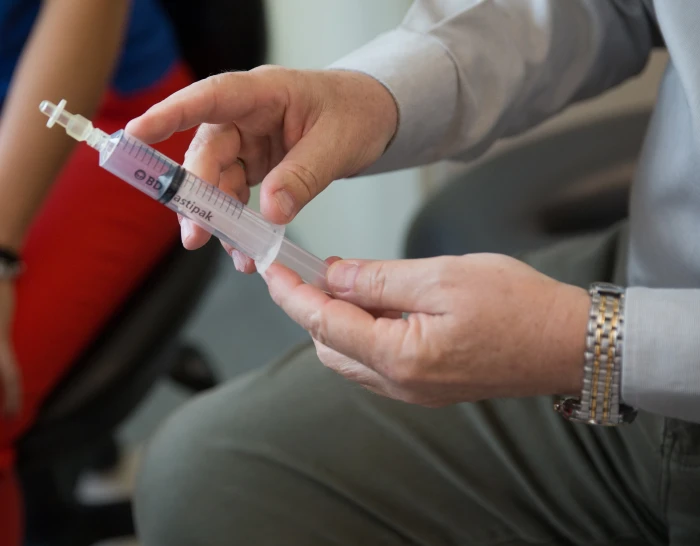This treatment requires the bladder to be filled once a week for four consecutive weeks, before further treatment gradually becomes more infrequent as the condition improves. Even when the patient is free of symptoms, it is still necessary to continue maintenance treatment for around six to eight weeks.
This can place a large financial burden on the patient that not everybody is able to afford. This treatment is also problematic for people who live and work far away from Budapest (or even Hungary) and have to find the time to travel for regular treatment (and often take the whole day off work).
One possible solution is for the patient to carry out self-catheterization and instill the medicine into the bladder themselves. Medical supervision and assistance is required to learn how to carry out the procedure in a sterile way and without inflicting injury.
Contents of the package
Three sessions of instruction, each lasting 30 minutes:
- Demonstration of self-catheterization and self-treatment of the bladder, under medical supervision
- Explanation of the sterilization procedure
- Discussion of the list of necessary equipment
- Answers to any questions related to the procedure
Self-treatment can save the patient a lot of time and cost, and can also allow the regularity of the treatment to be optimized depending on the state of their condition, thus reducing the over- or under-treatment.
Self-administered bladder treatment does not mean it is no longer necessary to continually monitor the condition or undergo regular medical check-ups. It is still a requirement to upload the relevant questionnaires and two-day urinary diary to the www.holyagfajdalom.hu website (in Hungarian), though a telephone consultation or brief face-to-face discussion with the doctor is only required approximately once every three months.
Our related doctors
Any questions before booking an appointment?
If you are unsure which doctor to see or what examination you require, we are here to help!
Simply request a free callback from one of our colleagues, who will help you find the right specialist based on your specific issue.



